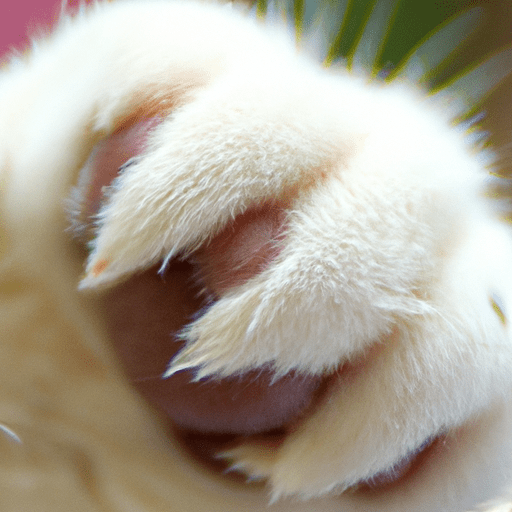Are you a proud cat owner or thinking about getting a feline companion? If so, it’s important to understand the phenomenon known as Cat Scratch Fever and how to prevent it. In this article, we will explore the ins and outs of this common issue, providing you with valuable insights on cats and kitten care. So, grab yourself a cup of tea, sit back, and let’s dive into the world of cat scratches together!
What is Cat Scratch Fever?
Cat Scratch Fever, also known as Cat Scratch Disease (CSD), is a bacterial infection that can be transmitted to humans through scratches or bites from infected cats. It is caused by the bacterium Bartonella henselae, which is commonly found in the saliva of infected cats. While most cases of Cat Scratch Fever are mild and resolve on their own, it is important to understand its causes and symptoms to prevent complications and seek treatment if necessary.
Definition of Cat Scratch Fever
Cat Scratch Fever is an infectious disease that humans can contract from cats. It typically presents with symptoms such as swollen lymph nodes, fever, fatigue, and headache. While it is usually a self-limiting condition, severe cases may require medical intervention. It is important to note that not all cats carry the bacteria responsible for Cat Scratch Fever, and the risk of transmission can be minimized by practicing proper cat care and preventive measures.
Causes of Cat Scratch Fever
Cat Scratch Fever is caused by the bacterium Bartonella henselae, which is commonly found in the saliva of infected cats. Cats become carriers of the bacteria through fleas, ticks, or other biting insects. When a cat scratches or bites a human, the bacteria can be transmitted through broken skin, resulting in an infection. It is important to note that not all scratches or bites from cats will lead to Cat Scratch Fever, as it depends on the presence of the bacteria in the cat’s saliva.
Symptoms of Cat Scratch Fever
The symptoms of Cat Scratch Fever can vary from person to person, but commonly include swollen and tender lymph nodes, usually in the area near the scratch or bite. Other symptoms may include fever, fatigue, headache, and a general feeling of illness. In rare cases, more severe complications may occur, such as abscesses, neurologic manifestations, or ocular involvement. If you experience any of these symptoms after being scratched or bitten by a cat, it is important to seek medical attention for proper diagnosis and treatment.
How Cats Scratch
Understanding how cats scratch can help cat owners better prevent scratches and ensure the well-being of their pets. Cats have retractable claws that they use for various purposes, such as climbing, hunting, and defense. By understanding the anatomy of a cat’s claws, the reasons behind their scratching behavior, and the different types of scratches, you can develop strategies to minimize scratching-related issues.
Anatomy of a Cat’s Claws
A cat’s claws are retractable, meaning they can be extended or retracted as needed. This adaptation allows cats to keep their claws sharp and protected when not in use. The claws are attached to the last bone of each toe and are made of a tough protein called keratin. Cats use their claws for various tasks, such as scratching surfaces, gripping prey, and climbing.
Why Cats Scratch
Scratching is a natural behavior for cats and serves several purposes. Cats scratch to remove the dead outer layers of their claws, stretch their bodies, mark their territory, and communicate with other cats. By scratching, cats also leave visual and scent marks, as the glands in their paws release pheromones that signal their presence to other cats.
Types of Scratches
Cats can engage in different types of scratching behaviors. Active scratching involves cats actively using their claws on surfaces such as furniture, carpets, or scratching posts. Passive scratching occurs when cats passively stretch their bodies against surfaces, which helps keep their muscles and joints flexible. Cat owners should be aware of both types of scratching and provide appropriate outlets for their cats to engage in this behavior without causing damage to furniture or other belongings.
Understanding Cat Behavior
To effectively prevent cat scratches, it is important to understand the behavior of cats. Cats have natural instincts and engage in behaviors such as territorial marking and playful behavior. By recognizing these behaviors, cat owners can better manage their cats’ actions and ensure a safe and harmonious environment for both the cat and the owner.
Natural Instincts
Cats have various natural instincts that influence their behavior. These instincts include hunting, territoriality, and social interaction. Understanding these instincts can help cat owners create an environment that meets their cats’ needs and reduces the likelihood of scratching-related issues.
Territorial Marking
One of the reasons cats scratch is to mark their territory. By scratching surfaces, cats leave visual marks and release scent signals through glands in their paws. This territorial marking behavior is a natural instinct, and providing appropriate scratching surfaces can help redirect the behavior to more appropriate areas. It is important to note that if a cat feels threatened or insecure in its territory, it may engage in excessive scratching as a means of protecting its space.
Playful Behavior
Cats are known for their playful nature. Play behavior includes activities such as pouncing, chasing, and batting at objects. Sometimes, during play, cats may scratch unintentionally. It is important for cat owners to provide appropriate toys and interactive playtime to fulfill their cats’ natural playful instincts and minimize the chances of involuntary scratching.
Health Risks of Cat Scratches
While most cat scratches are harmless, they can sometimes lead to health risks. Cat scratches have the potential to cause bacterial infections, including Cat Scratch Disease (CSD) and transmission of rabies. Understanding these health risks is essential for preventing complications and seeking appropriate medical attention when needed.
Bacterial Infections
Cat scratches can introduce bacteria into the skin, increasing the risk of bacterial infections. If the skin is broken by a scratch, bacteria from the cat’s saliva or the environment can enter the wound, potentially leading to localized infections. These infections can cause redness, swelling, pain, and discharge. It is important to clean cat scratches promptly and thoroughly to reduce the risk of bacterial infections.
Cat Scratch Disease (CSD)
Cat Scratch Disease, caused by the bacterium Bartonella henselae, is a potential complication of cat scratches. While most cases of CSD are mild and resolve without treatment, severe cases may require medical intervention. Symptoms of CSD can include swollen lymph nodes, fever, headache, fatigue, and generalized discomfort. If you experience these symptoms after being scratched by a cat, it is important to consult a healthcare professional for proper diagnosis and treatment.
Rabies Transmission
Although rare, cats can transmit rabies through scratches or bites if they are infected with the virus. Rabies is a serious and potentially fatal viral infection that affects the nervous system. If you are scratched by a cat exhibiting unusual behavior or suspect it may be infected with rabies, it is crucial to seek immediate medical attention. Prompt administration of post-exposure prophylaxis can prevent the development of rabies in humans.
Preventing Cat Scratches
Preventing cat scratches is essential for both the well-being of the cat and the safety of humans. By implementing proper handling techniques, regularly trimming a cat’s claws, and using soft paws or nail caps, you can minimize the risk of scratches and create a safe and comfortable environment for both you and your feline companion.
Proper Handling Techniques
When handling a cat, it is important to be gentle and avoid actions that might induce scratching. Approach the cat calmly and with confidence, supporting its body to help it feel secure. Avoid pulling or squeezing the cat, as this can cause defensive scratching. If the cat shows signs of unease or aggression, it is best to give it space and allow it to calm down.
Trimming a Cat’s Claws
Regularly trimming a cat’s claws is an effective way to minimize the risk of scratches. By keeping the claws short, you reduce the damage caused by unintentional scratching. Use proper cat nail clippers and be cautious not to trim too close to the quick, which can cause bleeding and discomfort. If you are unsure about how to trim your cat’s claws, consult a veterinarian or a professional groomer for guidance.
Using Soft Paws or Nail Caps
Soft Paws or nail caps are plastic caps that can be applied to a cat’s claws to prevent scratching. These caps are safe and comfortable for cats and can significantly reduce the damage caused by scratching. Soft Paws or nail caps need to be regularly replaced as the cat’s claws grow. If you are considering using soft paws or nail caps, consult a veterinarian for proper application and removal techniques.
Cat Scratch Fever in Children
Cat Scratch Fever can affect people of all ages, but children are particularly susceptible. Educating yourself about the prevalence of Cat Scratch Fever in children, implementing preventive measures, and knowing when to seek medical help are crucial steps in safeguarding the health of your child.
Prevalence in Children
Children are more likely to be scratched or bitten by cats due to their playful nature and close interactions with pets. As a result, they are more prone to developing Cat Scratch Fever. It is estimated that around 25% of Cat Scratch Fever cases occur in children under the age of 10. By understanding the risks and taking appropriate preventive measures, parents can reduce the chances of infection in their children.
Preventive Measures
To prevent Cat Scratch Fever in children, it is important to educate them about proper cat handling techniques. Teach children to approach cats calmly and avoid rough play. Supervise interactions between children and cats to ensure that both parties are safe. Additionally, regularly trim the cat’s claws, provide appropriate scratching surfaces, and encourage frequent hand washing after playing with the cat.
When to Seek Medical Help
If your child experiences any symptoms of Cat Scratch Fever, such as swollen lymph nodes, fever, or general malaise, it is important to seek medical help. The healthcare provider will assess your child’s symptoms, perform necessary tests for diagnosis, and prescribe appropriate treatment if needed. Early detection and intervention can help prevent complications and ensure a swift recovery for your child.
Treating Cat Scratches
Knowing how to provide first aid for superficial scratches, identifying signs of infected scratches, and understanding when to consult a doctor are essential aspects of treating cat scratches.
First Aid for Superficial Scratches
For superficial cat scratches, it is important to clean the area promptly with mild soap and water. Gently pat the wound dry with a clean towel and apply an over-the-counter antiseptic ointment. Cover the scratch with a sterile bandage or adhesive strip to protect it from further contamination. Monitor the scratch for signs of infection, such as increasing redness, swelling, or discharge, and seek medical help if necessary.
Dealing with Infected Scratches
If a cat scratch becomes infected, it is crucial to seek medical attention. Signs of infection may include increased pain, redness, swelling, warmth around the wound, or the presence of pus or discharge. A healthcare professional will assess the severity of the infection and may prescribe antibiotics to eliminate the bacterial infection. Follow their instructions closely and complete the full course of antibiotics to ensure proper healing.
When to Consult a Doctor
In certain situations, it is important to consult a doctor even for superficial scratches. Seek medical attention if the cat scratch is deep, bleeding profusely, or located on a sensitive area such as the face or eyes. Additionally, if you experience symptoms of infection, such as fever, chills, or swollen lymph nodes, it is crucial to consult a healthcare professional for proper evaluation and treatment.
Alternatives to Scratching
To protect your furniture and belongings from cat scratches, it is important to provide alternative outlets for your cat’s scratching behavior. By offering scratching posts, redirecting scratching behavior, and using deterrents, you can ensure that your cat’s natural instincts are satisfied while minimizing damage to your home.
Providing Scratching Posts
Scratching posts are essential for cats to fulfill their scratching needs. Choose a sturdy and tall scratching post made of materials such as sisal or cardboard. Place the scratching post in an easily accessible location, preferably near areas where your cat likes to scratch. Encourage your cat to use the scratching post by rubbing it with catnip or attaching toys to it.
Redirecting Scratching Behavior
If your cat is scratching furniture or other inappropriate surfaces, redirect their behavior to a suitable scratching post. Gently pick up your cat and place it near the scratching post, encouraging them to engage with it using positive reinforcement such as treats or praise. Be patient and consistent in redirecting their scratching behavior, and never punish or yell at your cat for scratching inappropriately.
Deterrents to Scratching Furniture
To discourage your cat from scratching furniture, you can use deterrents such as double-sided tape, aluminum foil, or pet-safe sprays with unpleasant smells or tastes. Apply these deterrents to the areas your cat tends to scratch, making them less desirable. Alongside deterrents, provide attractive scratching alternatives, such as the aforementioned scratching posts, to redirect your cat’s behavior.
The Role of Cat Toys
Cat toys play a crucial role in keeping your cat engaged, mentally stimulated, and satisfied. By providing interactive toys for play, offering suitable scratching toy options, and incorporating puzzle toys into your cat’s routine, you can enhance their overall well-being and reduce the likelihood of destructive scratching behavior.
Interactive Toys for Play
Interactive toys, such as feather wands, laser pointers, or treat-dispensing toys, are excellent for engaging your cat in interactive play. These toys simulate the hunting instinct and provide mental and physical stimulation. Regular sessions of interactive play can help fulfill your cat’s needs, alleviate boredom, and decrease the chances of excessive scratching.
Scratching Toy Options
In addition to traditional scratching posts, there are various scratching toys available that can be placed horizontally or vertically. Scratching pads, cardboard scratchers, and even specially designed furniture with scratching surfaces can be attractive alternatives for your cat. Experiment with different types of scratching toys to find the ones that your cat prefers and provide them in multiple locations throughout your home.
Benefits of Puzzle Toys
Puzzle toys are excellent for providing mental stimulation and preventing boredom in cats. These toys require problem-solving skills and often involve treats hidden within compartments or puzzles that need to be manipulated to release a reward. By incorporating puzzle toys into your cat’s routine, you can redirect their focus onto these stimulating activities and decrease the likelihood of excessive scratching due to boredom or frustration.
When to Seek Veterinary Help
While scratches from cats are generally harmless, there are instances when it is important to seek veterinary help. By recognizing signs of excessive scratching, changes in behavior, and unhealed or infected scratches, you can ensure that your cat receives the necessary medical attention and treatment.
Excessive Scratching
If your cat is excessively scratching, constantly licking or chewing their paws, or showing signs of skin irritation, it may indicate an underlying issue. Allergies, skin infections, or parasites such as fleas can cause excessive scratching. It is important to consult a veterinarian to determine the root cause of the scratching and develop an appropriate treatment plan.
Changes in Behavior
Changes in your cat’s behavior, such as increased aggression, avoidance of social interactions, or excessive grooming, may indicate physical or psychological issues. Cats may resort to excessive scratching as a means of coping with stress or anxiety. If you notice any significant changes in your cat’s behavior, it is important to seek veterinary advice to rule out any underlying medical conditions and address any behavioral concerns.
Unhealed or Infected Scratches
If your cat has scratches that do not heal or become infected, it is crucial to consult a veterinarian. Infected scratches may present with redness, swelling, discharge, or a foul odor. By seeking veterinary help, the appropriate treatment, such as antibiotics or wound care, can be administered to ensure proper healing and prevent further complications.
Understanding Cat Scratch Fever, how cats scratch, cat behavior, the health risks of cat scratches, and measures to prevent and treat scratches are crucial for cat owners. By following preventive strategies, providing appropriate outlets for scratching behavior, and being vigilant about any changes in your cat’s health or behavior, you can create a safe and harmonious environment for both you and your feline companion. Remember, a little knowledge and proactive care go a long way in keeping your cat and yourself scratch-free and happy!








